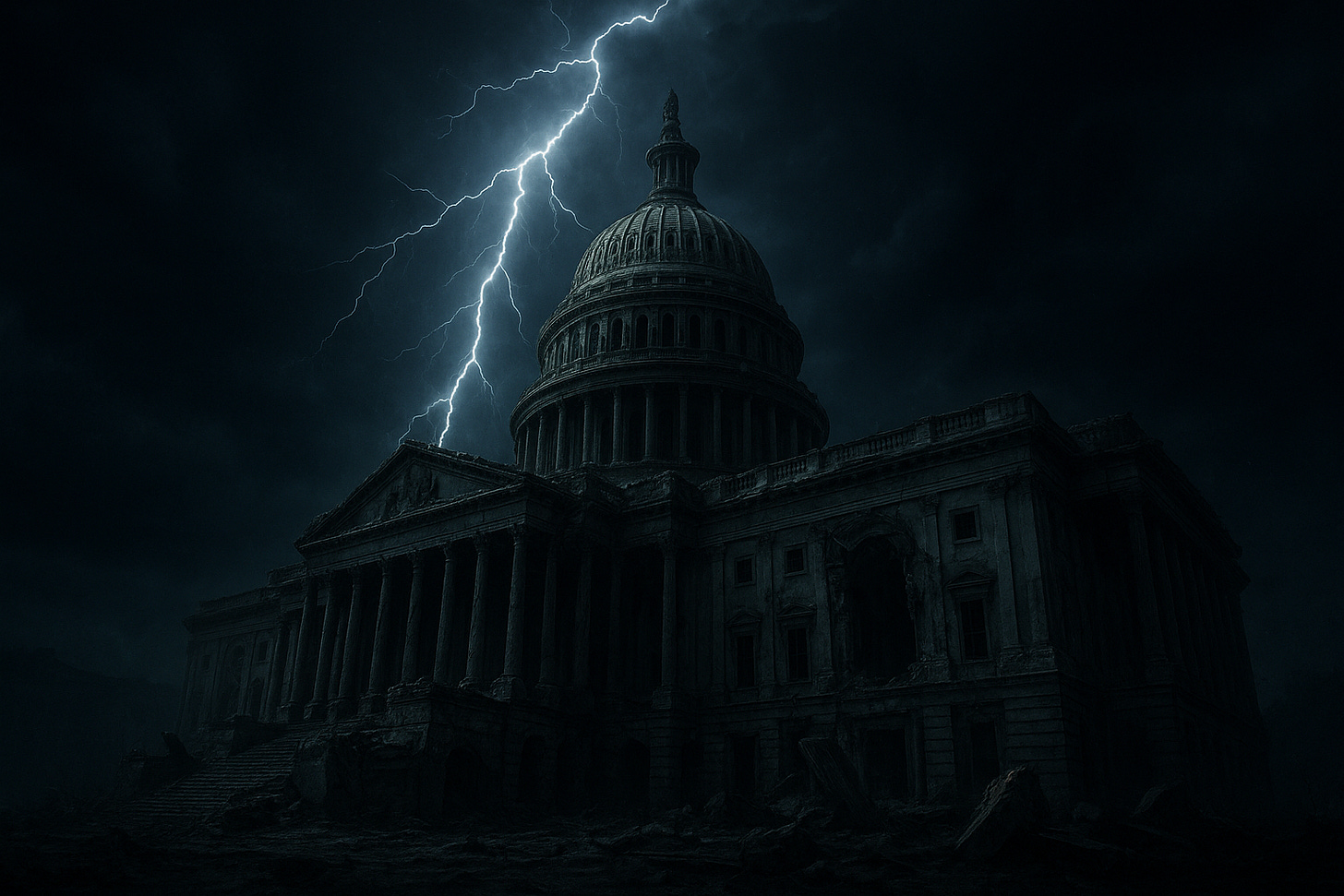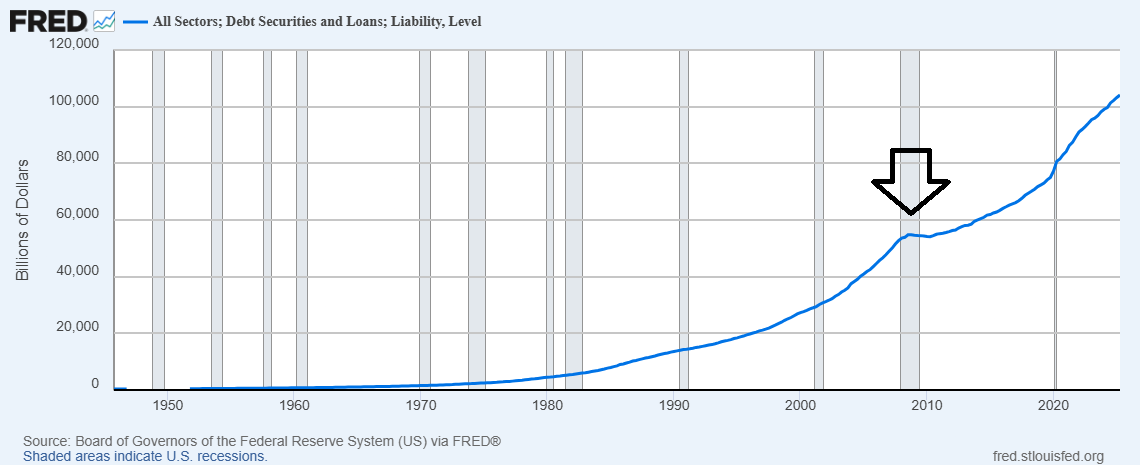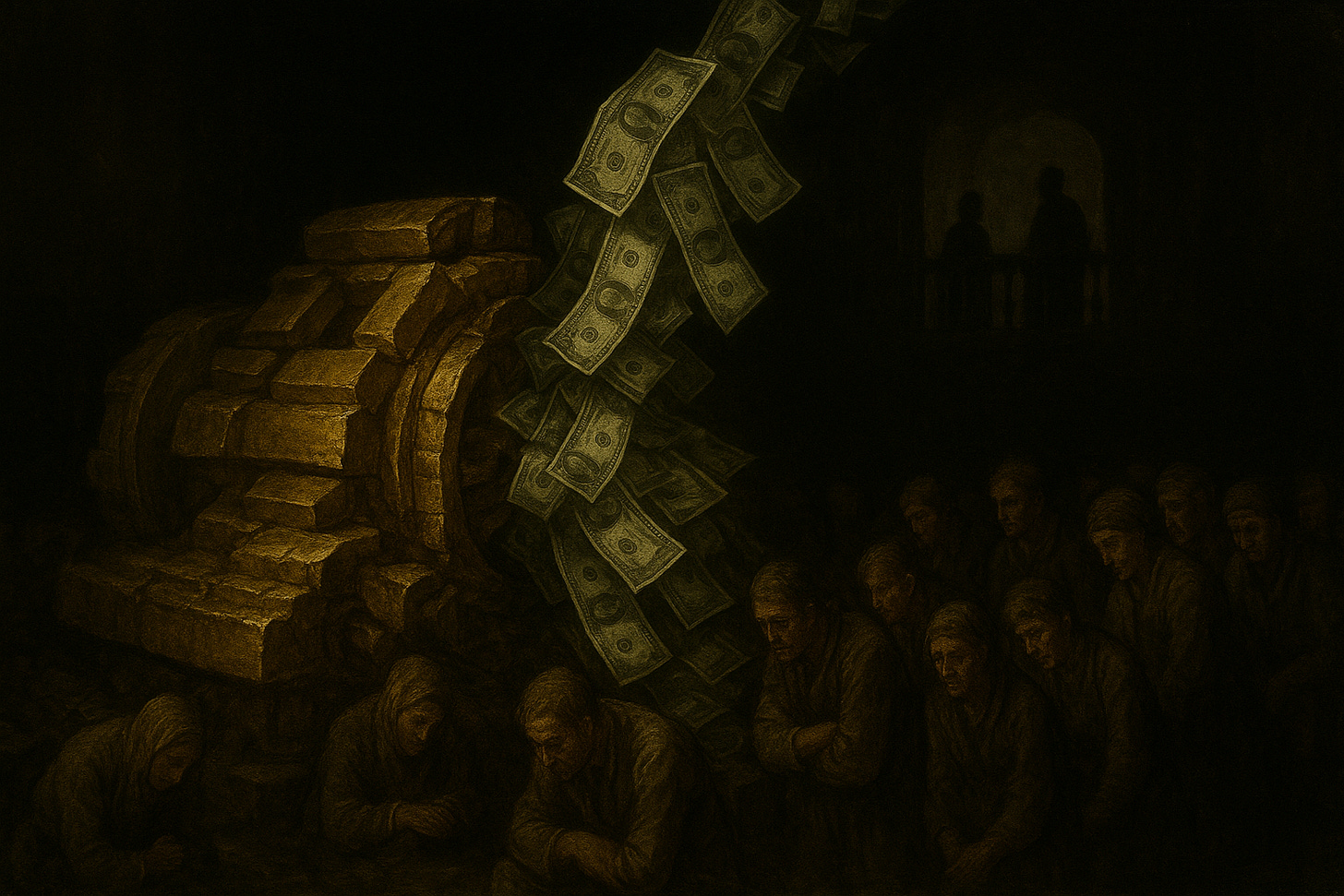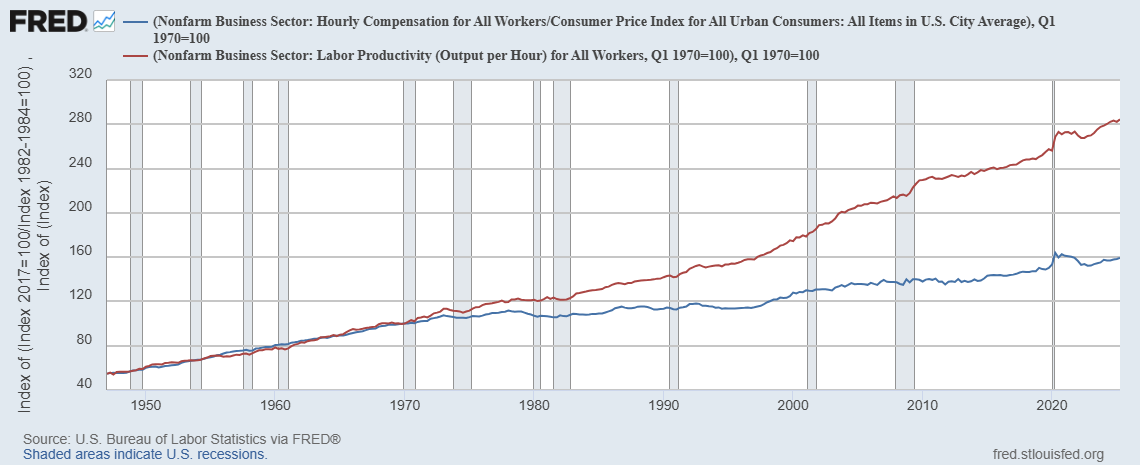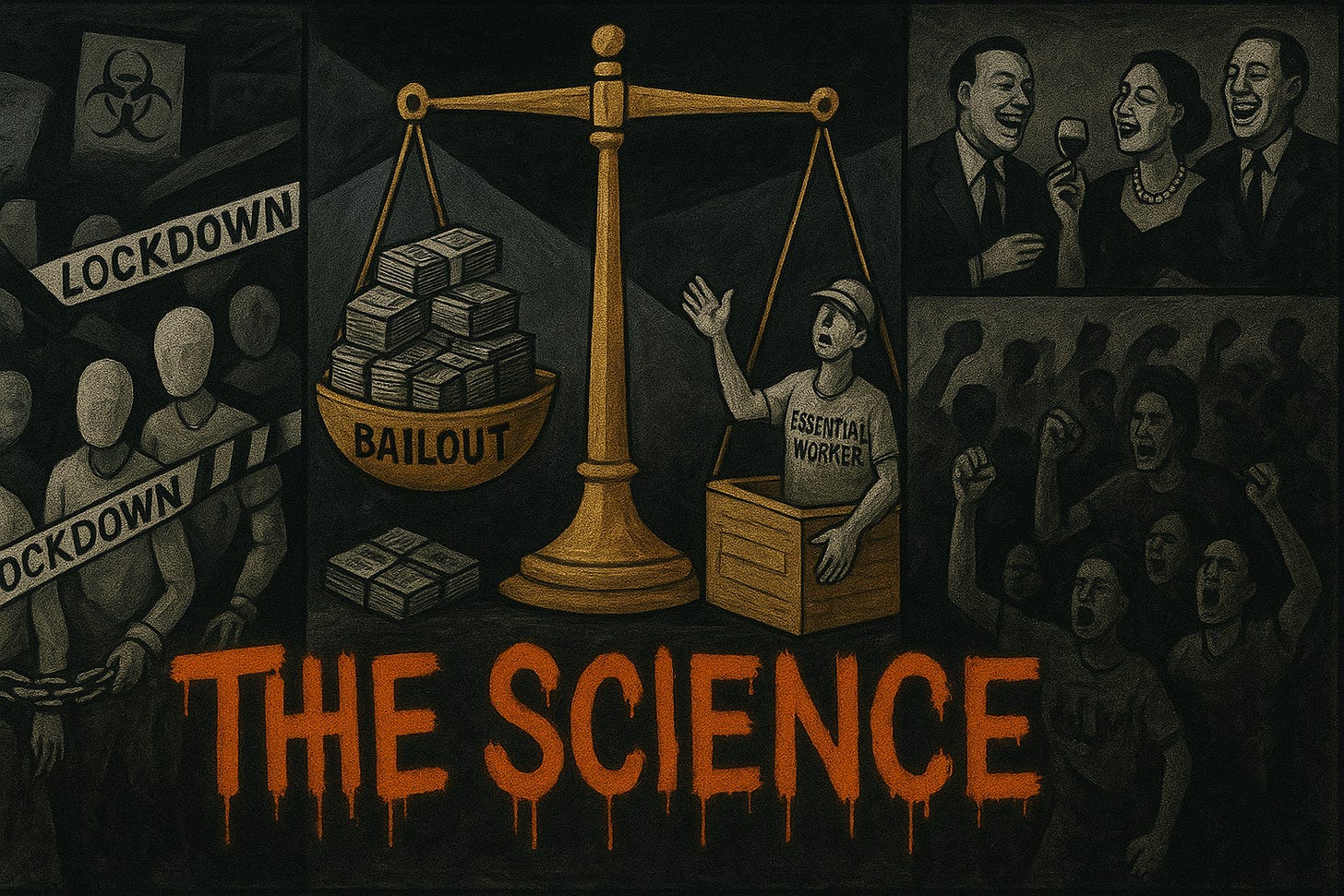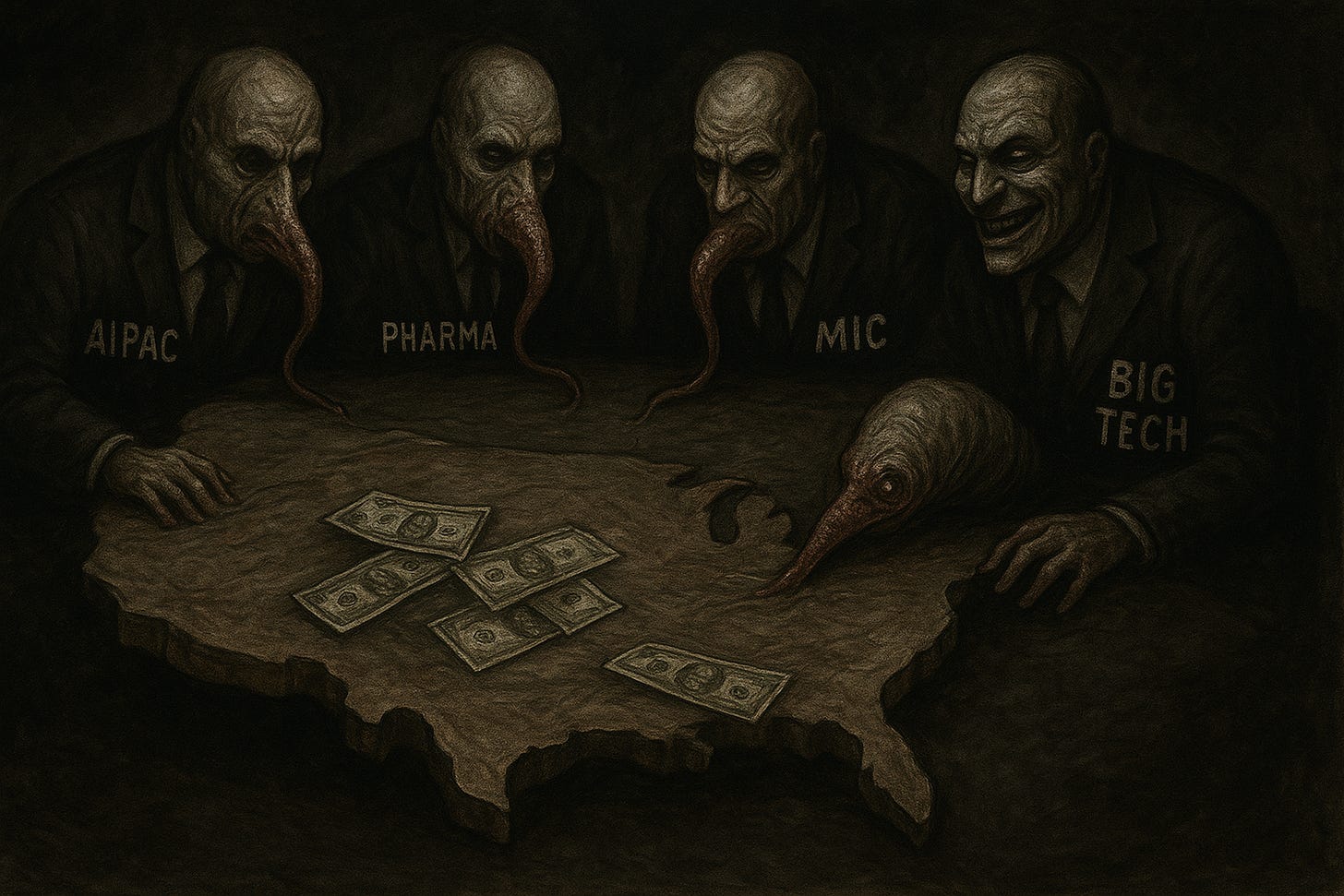Embracing the Fourth Turning Part 2: Crumbling Institutions
Collapse to Creation: The Fourth Turning's Reckoning and Rebirth
Last time, we established that the storm was coming. As the clock strikes midnight on a crumbling citadel — where AIPAC wines and dines Congress, big pharma funds the FDA, and Congress spends more than ever — 2025’s Fourth Turning storm exposes a foundation of rot.
Wise founders knew lasting systems outlast leaders, their genius crafting structures to endure well after they leave this mortal coil. But like people, these frameworks age, corrupt, and falter. These crumbling structures are felt both intuitively and rationally across the West today, signaling that either change or failure is on the way.
Confidence in government, finance, and civic life has never been lower, fading in this predictable and predicted phase of the Fourth Turning. In the US, confidence across 17 major institutions is at a historic low of just 28%. The lowest? Congress, netting just single figures of support.
History teems with such institutional collapses, but the rot and erosion we’re currently witnessing carry a bitter edge, laced with rage. Post-WW2 and older edifices alike sink like castles built on sand, as their foundation — fiat currency — is inherently unstable. It’s been unstable for decades already, and is only getting worse.
Money shapes value. When it shifts, the structures built atop it erode. From Washington to Brussels — from U.S. military bloat to Europe’s border crisis, COVID mistrust to judicial failures — the decay spreads, and at a faster pace than ever before.
Fiat currency isn’t the sole cause of corruption or failing institutions. Rather, it’s an amplifying factor and an accelerant that leads to a more rapid decay than sound money itself would.
Institutional decay is far from new, but it’s now at a critical point. What happens in the next several years will determine the direction of the collective West over the next century or more.
There’s more. In addition to the corruption, I can’t help but sense a dose of disdain and even malice Western governments have towards their own people. The options are simple: Either governments are so incompetent they don’t know they’re kicking a hornet’s nest, or they’re doing it on purpose for their own ends.
Let’s look at how we got here, which institutions are in the roughest shape, and what we can expect in the future.
The Crumbling Foundation: Setting the Stage
Public support for institutions has been on a long, steady slide for decades. In the US, public trust in the government began its decline in the late 1960s and accelerated in the 1970s, recovering briefly under Reagan, climbing under Clinton, and spiking briefly under George W Bush before plummeting to where it is now.
A cascade of betrayals — the Dot-Com bust, the post-9/11 security state, the WMD lies of Iraq, and the 2008 bailouts that socialized Wall Street’s losses — systematically stripped my generation of any remaining institutional trust.
One key takeaway from 2008, for those paying attention, was that even the slightest retrenchment in debt meant certain death for the financial system. Look at the part under the arrow. That tiny downturn almost destroyed the global economy. The takeaway: The debt must flow or the whole system goes kablooie.
Let’s look briefly to Europe:
Eurozone Crisis: Periphery countries like Greece, Portugal, Italy, and Spain saw their trust in national institutions crater due to post-crisis austerity and high unemployment.
Cracks Showing: The economic crisis and “bail-in” in Cyprus in 2013 spooked euro-holders, as the bail-in model was confirmed by the ECB as the model for future economic crises.
Migration Crisis: Migration had already been a major issue in Europe prior to the Syrian Civil War, but accelerated rapidly afterwards. It’s been a major catalyst for destabilization continent-wide. We’ll cover this more later.
The Anatomy of the Rot: A Sector-by-Sector Dissection
The erosion of trust the West has experienced isn’t just an abstract feeling. Rather, it’s a rational response to the systemic failure of our most critical institutions. Let’s take a look at the rot in each, flipping over the dead logs to see what creepy crawlies lie underneath.
Finance: The Engine of Corruption
The core engine of corruption is the financial system and, specifically, the fiat currency system that drives it. Being able to debase money and create it out of thin air leads to problems, and has done so going back to ancient times — this is nothing new. Now, however, it’s easier than ever to do, as money can be made by the push of a button.
Fiat money separates reward from effort and gives corruption the full-steam go-ahead. Note the stark split between labor productivity and income in 1971, the year the dollar was fully removed from the gold standard (see chart below). It’s no accident.
A key reason for both increased wealth inequality and corruption is found in the Cantillon Effect. New money benefits the already-connected, like banks, governments, and asset owners like stockholders first. The productive class gets it later. Think trickle-down economics, except nothing ever trickles down (it never did anyway). Take a look, for example, at how historically low Fed funds rates made a stock boom, and how printing money in the wake of the 2020 crisis skyrocketed stocks even further. Given that around 10% of Americans own some 90% of stocks, you’ll get the picture. Now, take the time machine test: Imagine telling anyone 30 years ago about billionaires worth hundreds of billions of dollars. It sounded absurd then, and it still does today.
The bailout culture created in 2008 undermined any sense of financial fairness — which was already scant at that point. This system of privatized gains and socialized losses is now deeply embedded in the public psyche, to the point where ordinary citizens fully expect that to be the case in any future economic crisis. This is not just an American thing, either — as mentioned above, the 2013 Cyprus bail-in crisis showed Euro holders that their deposits are really just unsecured loans to banks, and not really theirs at all.
Then there’s the ESG and Stakeholder Capitalism that’s been wielded like a blunt force object to enforce a global, anti-national identity across corporations. Asset managers like Blackrock, State Street, and Vanguard own enough shares in enough major companies to set policies that affect the whole world and, in many ways, set cultural tones. Why have so many companies gone woke? It wasn’t just their morals — it was enforced by their large shareholders.
The COVID Crucible: The Mask Comes Off
If you were to nail down any one thing over the last 20 years that broke public trust in governments, it was the COVID crisis. This was the ultimate stress test of our institutions, and they failed spectacularly. It revealed institutional insanity, cruelty, and hypocrisy, all wrapped up in one creepy package that led to a crisis of legitimacy. The COVID era revealed institutional failures on four fronts.
1: Abandonment of Principle. In both the US and the EU, the rule of law and bodily autonomy were taken from their purportedly sacrosanct pedestal and lit on fire.
There’s a litany of legal and moral violations that could span pages, but I’ll cover a few. In the US, for example, the CDC unconstitutionally announced blanket eviction moratoriums from September, 2020 to the end of August, 2021. Any tenant with more brain than morals would have stopped paying their rent, which happened plenty. Combine that with workers deemed “essential” and “non-essential” and there was an arbitrary mess well beyond the rule of law.
That the Biden administration even attempted to enforce OSHA mandates stipulating companies with over 100 employees require testing spoke to the fervor of the madness. The military required the vaccine, as did hospitals. Mask mandates were common and many states either attempted to create or did create vaccine passports. The same was common in Europe, with Austria, for example, imposing a full vaccine mandate. I hopefully don’t have to remind you of much more here:
2: Corruption of Science. It’s hard to overstate just how much faith has been lost in scientific and medical institutions in the wake of COVID. Health agencies became propaganda arms, and once-lionized figures like Anthony Fauci are facing scrutiny for what were, at the time, obvious lies.
In the US, The NIH/NIAID’s funding of gain-of-function research — and the cover-ups that followed — eroded public trust in public health authorities. Meanwhile, the CDC’s wishy-washy, made-up guidelines on masks and social distancing created arbitrary rules that were often cruelly enforced by lockdowns that prevented family gatherings, stopped loved ones from visiting family in hospital, and destroyed much of social life. The same can be said in Europe, just with different institutions.
3: The Censorship-Industrial Complex. COVID saw the full merger of state and corporate power to silence dissent. This gave governments a taste of raw censorship power, which many will be loath to let go of. It’s a terrible precedent to set.
In the US, for example, the White House directly flagged a huge number of posts across social media as “disinformation” and leaned on social media platforms to take the posts down and ban users. This information is now widely public via the Twitter Files, Mark Zuckerberg’s own words, and Google’s recent announcement that the government asked them to censor or ban certain creators.
Obviously, this is directly in contravention to the First Amendment, which also prevents the government from forcing companies to do what they wouldn’t do on their own.
In the EU, The EU’s Disinformation Unit partnered with Big Tech to remove “harmful” content, which led to governments arresting citizens for “spreading fear” online.
I recommend looking more into these breaches, because they’re only going to get more common in the coming years.
4: The Ultimate Hypocrisy: Borders and BLM. While citizens across the US and Europe were locked down to prevent the spread of COVID, countless millions undocumented migrants crossed into the countries illegally. They weren’t tested for COVID and weren’t subject to vaccine mandates, all while legal citizens faced travel bans and other restrictions.
Meanwhile, in the US, the BLM riots — which happened right in the middle of lockdowns — were allowed and even encouraged to happen. Mass gatherings, we were told, were superspreader events. But somehow the virus knew to avoid BLM riots, right?
The border crisis as well as BLM riots during COVID proved the lockdowns were never about health. They were a demonstration of power, with the policy aim being control, not safety.
The Political System: From Representation to Parasitism
The concept of the Uniparty in the US is well established, and for good reason. No matter who we actually vote for, we get the same thing: More spending, more war, more support for Israel, and more debt. The theatrical opposition is purely that — theatrical — and while you may see public figures get excoriated in front of Congressional committees, little happens.
A key reason is this: The US Congress is captured territory, owned by the American Israeli Public Affairs Committee (AIPAC), the Military-Industrial Complex, Big Pharma, and, increasingly, Big Tech. This donor money dictates policy, not the national interest of ordinary citizens. Americans are increasingly aware of this, yet little can be done in our current system as politicians need to bend the knee in order to receive donor funds. This is Turchin’s “elite overproduction” in summary: If one aspiring politician won’t kiss the ring, another will. And they’ll spend as much as they want without limit, because money can always be borrowed (printed).
The donor-driven spectacle is matched only by the sheer incompetence of the State. There’s no better example than California’s $100 billion-plus high-speed rail fiasco. It’s a monument to bureaucratic bloat that remains nowhere close to finished and is hugely over-budget. And that’s just for 800 miles of rail. Meanwhile, in China, nearly 30,000 miles of high-speed rail has been laid in the past few decades. It makes us look downright silly.
While state legislatures and the national Congress run its circus, the Deep State runs its own show. An unelected bureaucracy committed above all to maintaining its relevance and job roles, it plays an enormous role in the actual direction of the country. I call this institutional capture The Praetorian Problem, as capture of power in centralized empires happens every single time. Read the article linked in the previous sentence for more details.
Laws for Thee but not for Me
Similarly, two-tiered justice has made massive inroads across Western societies. During COVID, ordinary citizens were fined or arrested for opening their businesses or even attending church. Meanwhile, political elites like Gavin Newsom and Boris Johnson were caught having lavish parties during the height of lockdowns. Laws for thee, but not for me? Absolutely.
The pandemic gave governments power to bypass legislatures and rule by decree. Using emergencies to push agendas is a time-tested strategy for any government, going back as far as governments have existed, from Washington to Rome and Beijing to Babylon.
One can’t ignore the damage done to the US before COVID either by the entirely-manufactured and now-disproven Russiagate hoax that hamstrung the first Trump administration. This rabbit hole deserves its own post, but it looks likely that justice may finally happen for this deeply divisive and cynical political ploy.
In Europe, two-tiered justice is on full display. In the UK, citizens are arrested for “offensive” social media posts. In Germany, the network enforcement law forces tech companies to censor speech on behalf of the state under threat of fines, privatizing censorship.
Europe is subject to a supranational European Court of Human Rights that supersedes national, democratic decisions regarding things like immigration and censorship. That the EU dares to call itself a democracy is a sick joke.
The Media: Fourth Estate to Fifth Column
Across the Western world, the press has abandoned its duty to inform and has instead become the propaganda arm of regimes. People are quickly becoming wise to this, switching instead to alternative media — but that alternative media is now coming under its own form of censorship. For example, TikTok was forced to be sold to billionaires like Larry Ellison, and is already undergoing mass censorship.
The synchronized narratives across much of the globe during the COVID pandemic, as well as during elections and during crises like the BLM riots and January 6 show just how controlled the press really is.
The active suppression of stories like the Hunter Biden laptop, done in lockstep in the leadup to the 2020 election, shows direct collusion with the deep state.
Further, active fomenting of social, racial, and gender divisions by toxic and clickbaity articles and videos — both for profit and division — have undermined the credibility of all major journalistic institutions. According to Gallup, only 12% of Americans have any confidence in TV news, and less than 20% have any confidence in newspapers. That’s an absolute cratering.
The media has lost all legitimacy, and rightly so. Their decay is one of the most visible to the public, and one of the most impactful.
Academia: From Pursuit of Truth to Factory of Resentment
Top universities used to be places of wonder. In recent decades, if you told someone you went to Harvard, you automatically gained respect. Now, recent graduates may be met with disdain. It’s difficult to understate the effect of this loss of institutional trust.
Rather than inform, many universities now exist to indoctrinate and dismantle Western civilization. This is no accident! This is the result of The Long March Through the Institutions, beginning in the 1960s and 70s, when Leftists made it their aim to dominate critical pedagogical institutions. It worked, and now students from top institutions leave with more opinion than fact, and quite skewed opinions at that. The stereotype of a normal kid going to college and coming back pierced and with blue hair is a stereotype on purpose.
DEI bureaucracy, CRT, and gender ideology replacing core curricula mark a turn back from high-minded philosophical thinking to self-interested, me-first, biological thinking. This harkens back to JD Unwin’s shift down the civilizational ladder away from Rationalistic and towards Zoistic (see previous article for context).
Academic institutions will be the first to label those protesting mass migration as racist, as well as call those who see it as part of a broad pattern “conspiracy theorists.” These terms are losing their bite — people are waking up.
European intellectual institutions, birthplace of anti-western thinking like the Frankfurt School of Critical Theory, saw their ideas infiltrate the U.S. in the 1920s and 30s, gaining dominance through postmodernism in recent decades. Having exported these theories, they now heavily influence the Western World, often to our collective detriment
The Malice Factor: Incompetence or Hostility?
From all of the above converging factors, one key question arises:
Is the institutional rot due more to incompetence or to malice?
A valuable saying goes like this: Once is an accident. Twice is a coincidence. But three times is enemy action.
The patterns are too consistent and cross too many institutions and borders to be accidental. Incompetence is random and, occasionally, would lead to good outcomes. What we’re seeing is malice.
Policies of open borders, weaponized justice, financial transfer to elites, and COVID-era control all share the same outcome: The weakening of the native population, the dissolution of national cohesion, and the transfer of power to a global elite.
Look no further than the mass migration occurring across the Western World to see the malice. Replacement Migration isn’t a theory: It’s UN Policy, as outlined in this document. Sure, a large part of the migration is desperation in the face of declining populations and worrisome pension schemes. Some political leaders do earnestly believe they’re doing the right thing, often out of naivety. But if things simply weren’t going to plan, governments would change their tack. Most are not because the ideology is too pervasive.
The most evil thing I’ve ever witnessed was governments telling their young people their countries were overpopulated and to stop having babies. Then, just years later, they turned around and said people weren’t having enough babies so immigration was necessary, contradicting the very overpopulation problem they had previously warned against.
I repeat: This is evil, and it must end.
Rot Before Renewal
“The more corrupt the state, the more numerous the laws.”
-Tacitus, Annals, Book 3
The rot across Western institutions was predictable, and is now total and undeniable. Things may look bleak for now, but look at this time as a good and necessary thing. A terminally diseased system can’t be reformed. It must be allowed to fall so something new, built on sound principles like sound money, free speech, and national sovereignty can take its place. For now, there are too many laws, our system is top-heavy and overly complicated, and it’s produced a confused, tangled mess. Look at the looming government shutdown over yet another Continuing Resolution spending bill — it’s the same story, again and again.
In the previous article, I used the metaphor of a forest fire needed to clear out the underbrush and allow new life to flourish. Out of this conflagration must come more localization, government reforms, sound money, free speech, and a more optimistic society. We’ll build new institutions that earn our trust. In the ashes of the previous system, we’ll welcome a new dawn. Institutions have had to be destroyed and rebuilt before, and it’ll happen again. Europe rebuilt and came out stronger after the Black Plague. Americans fought for independence from a tyrannical system. It’s just our turn now.
The current struggle will be a painful but necessary part of the Fourth Turning. People are already fractured to the point of irreconcilable differences. Conflict is guaranteed, as diametrically opposed worldviews can’t continue to coexist. Join me in the next article, where we’ll explore those irreconcilable differences, as we break down where we’re headed next.


